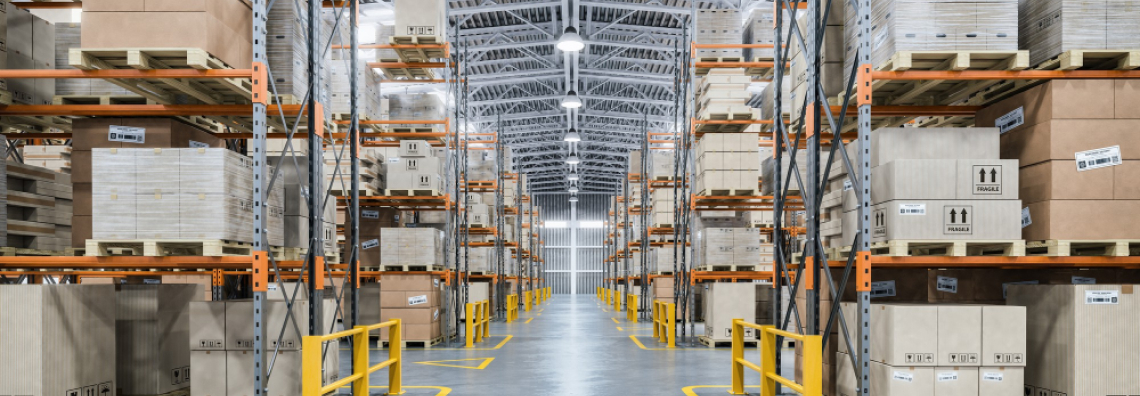Best Practices for Organizing Warehouse Storage Space

To maximize output, guarantee safety, and make the best use of available space, a warehouse must be organized effectively. Adopting best practices can greatly enhance operations, regardless of the size of your organization—a major distribution centre or a small storage facility. Here are some key strategies for organizing warehouse storage space to help you streamline processes and achieve operational efficiency.
-
Assess and Plan Your Space
Make a detailed analysis of the available space and your present storage procedures before making any changes to your warehouse plan. Determine any safety risks, unused space, and bottlenecks. You’ll be able to design a more effective plan if you comprehend your warehouse’s requirements. Space usage, traffic movement, and inventory analysis are important factors. This first stage is critical to identifying inefficiencies and organizing improvements that support your operating objectives. Undiscovered options to maximize your warehouse space may be found with a thorough review.
-
Implement a Logical Layout
A rational layout that makes all things easily accessible is a sign of a well-organized warehouse. Cutting down on trip time and error risk is the aim. The ABC analysis approach can be used to priorities inventory placement, zoning the warehouse based on product category or frequency of usage, and creating clear flow channels for easy mobility are some strategies. Worker productivity and operational efficiency can both be greatly increased with a logical layout. Furthermore, it can shorten the time needed to educate new hires because an easy-to-understand layout makes navigation and understanding quicker.
-
Maximize Vertical Space
Making use of vertical space is essential to effective storage in warehouses. Having high ceilings allows you to add more storage without having to take up more space. Purchasing robust racking systems, building mezzanines for extra storage levels, and making sure all vertical storage options adhere to safety codes are some advice. Utilizing vertical space well can significantly increase storage capacity, enabling the storage of more material without requiring more floor area. Additionally, it contributes to a safer working environment by keeping the warehouse floor tidy and orderly.
-
Use Appropriate Storage Equipment
Keeping a warehouse organized requires selecting the appropriate storage equipment. The equipment ought to be customized to meet your operating and inventory requirements. Pallet racks for bulk storage, bins and containers to keep little objects organized within bigger shelving units or racks, and adjustable shelving units for tiny items are other options. Purchasing high-quality storage equipment can increase its longevity and lessen the need for replacements on a regular basis. Furthermore, by simplifying the process of finding and retrieving objects, specialized storage solutions can increase efficiency.
-
Implement Inventory Management Systems
Supply management, error reduction, and inventory level tracking all depend on an efficient inventory management system (IMS). Organization in warehouses can be significantly improved by technology. Automated inventory tracking, streamlined order processing, and real-time data provision are all possible with systems like Warehouse Management Systems (WMS), barcode scanners, and RFID technologies. Inventory accuracy can be increased, and human error can be greatly decreased by putting these technologies into practice. They also provide insightful analysis of inventory trends, which aids in improved demand prediction and stock control.
-
Regularly Review and Rotate Inventory
Regular assessments and inventory rotation are effective strategies to avoid obsolescence and guarantee optimal space utilization. Among the procedures include cycle counting to keep accuracy high, applying the First-In, First-Out (FIFO) strategy to minimize spoilage or obsolescence, and routinely checking ‘A’ products to make sure they are in the most accessible places. By identifying slow items through routine inventory assessments, you can act before they become an issue. Furthermore, by keeping an updated and fresh inventory, these procedures enhance overall consumer satisfaction.
-
Train and Empower Staff
Maintaining an orderly warehouse requires well-trained employees. Make sure all staff members are aware of the value of organization and are competent with storage systems and equipment. The main topics of instruction should be operational effectiveness, safety procedures, and continuous development. Employee feedback and improvement suggestions should also be encouraged. Providing staff with training and expertise can boost morale and productivity. Additionally, a staff with proper training is more capable of managing unforeseen circumstances and keeping things running smoothly.
-
Prioritize Cleanliness and Maintenance
Keeping a warehouse tidy and well-maintained makes it easier to arrange and run. Your storage equipment’s lifespan can be increased, and malfunctions can be avoided with routine maintenance. Among the actions are regular cleaning to maintain debris-free locations, equipment inspections to verify safety requirements, and pest control procedures to safeguard inventory. Additionally, a clean warehouse enhances the working environment overall and lowers the possibility of accidents and health problems. Frequent maintenance assists in spotting possible issues early on, preventing expensive repairs and downtime.
-
Optimize Picking and Packing Processes
Simplifying the picking and packing procedure can save labor expenses and increase warehouse productivity considerably. Strategies include zone picking, which assigns workers to certain zones to maximize efficiency, batch picking, which shortens travel times, and the use of automated technologies like robotics or conveyor systems, which expedite the process and lower error rates. Order fulfilment times can be shortened, and customer satisfaction would be raised with more efficient packing and packing procedures. These methods can also lessen physical stress on employees, creating a more sustainable and healthy work environment.
-
Monitor and Adapt
Over time, warehouse requirements may vary, so it’s critical to consistently assess performance and modify your organizational methods accordingly. Monitoring tools include keeping an eye on key performance indicators (KPIs) to spot areas that need work, establishing a staff feedback loop, and routinely assessing and revising your organization’s plan to accommodate evolving requirements and technological advancements. Your warehouse will stay effective and adaptable to new difficulties if it is continuously monitored. Quick change adaptation can boost overall operational resilience and provide your company with a competitive edge.
Maximize Your Warehouse Efficiency with IPAK’s Proven Strategies
A leading supplier of advanced packaging and storage solutions, IPAK is dedicated to assisting companies in streamlining their warehouse operations. With years of experience in the business and a commitment to client pleasure, we provide a large selection of items made to satisfy the various needs of our customers. Specializing in innovative inventory management technologies and high-quality racking and shelving systems, we offer comprehensive solutions that improve productivity and safety in any warehouse setting.
Contact Us for Your Storage Solutions Today!
At IPAK, we’re experts at offering creative storage options made to fit your requirements. Our team of professionals is here to assist you in putting the best practices for warehouse space organization into effect, ensuring increased efficiency and security. Contact IPAK right now to find out how our extensive array of goods and services may completely transform your operational and storage plans. Don’t hesitate any longer. Get in touch with us right now to begin warehouse optimization! For additional information, go to IPAK
